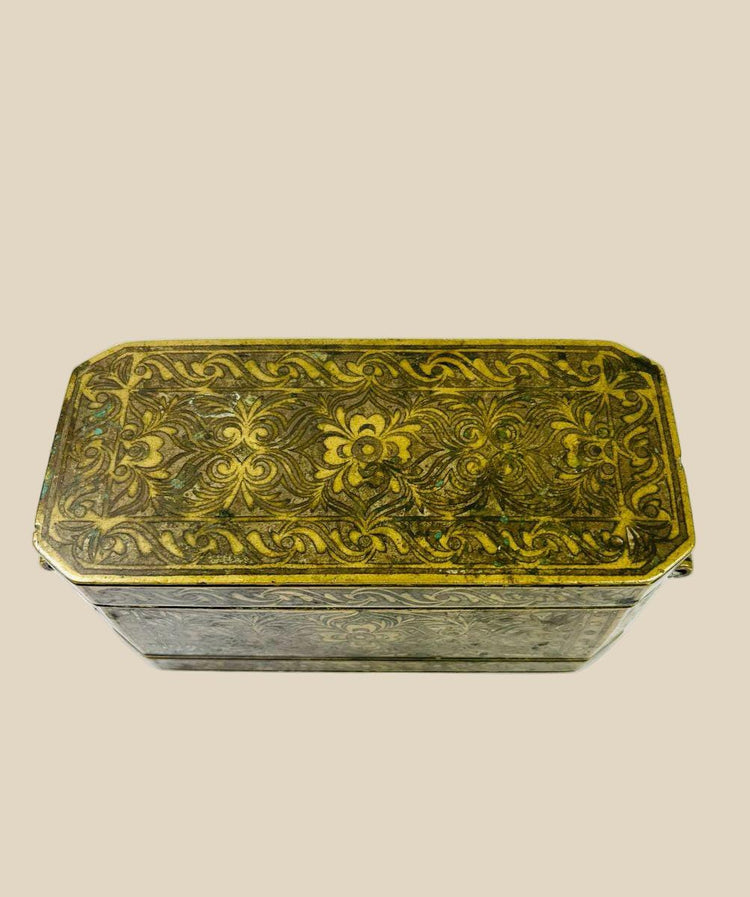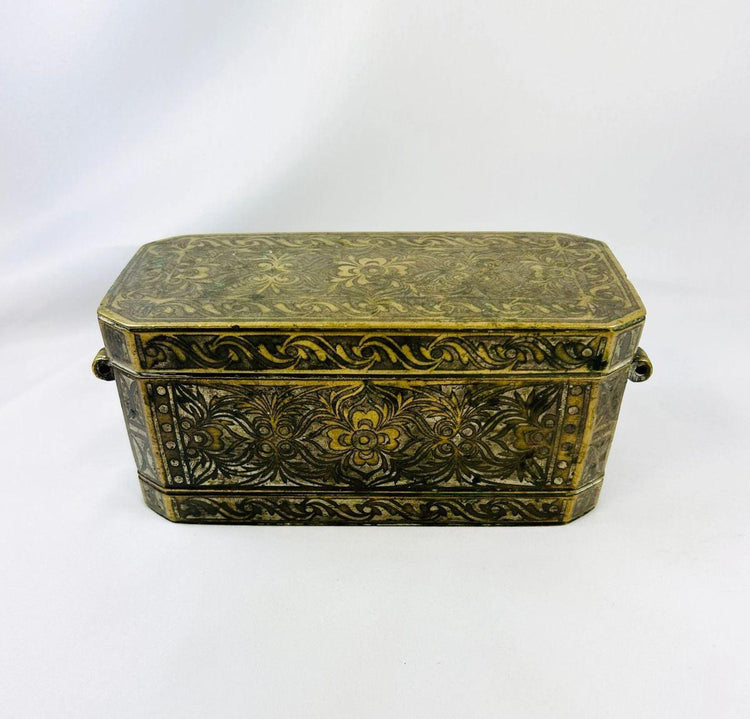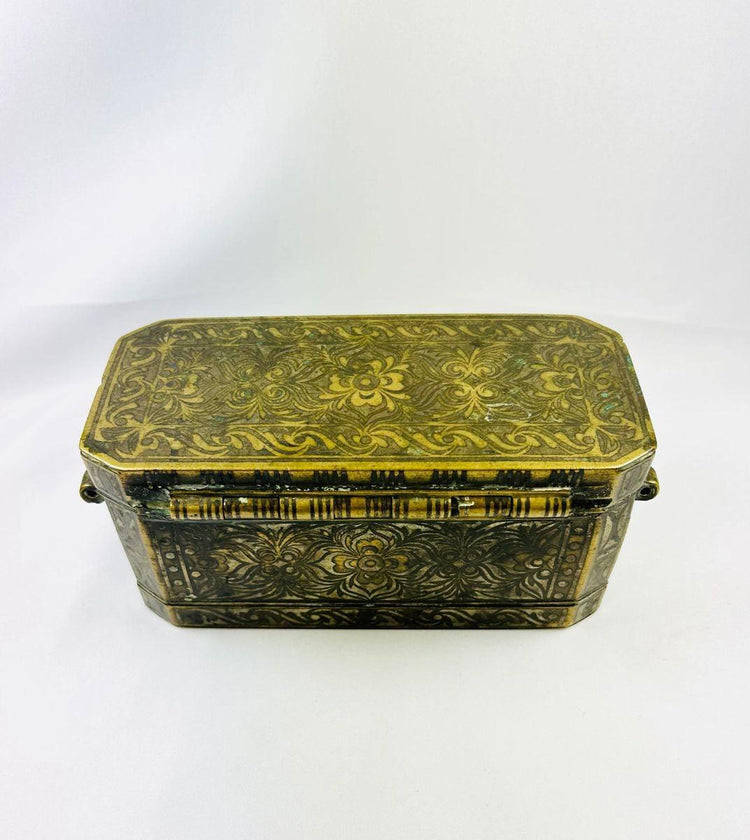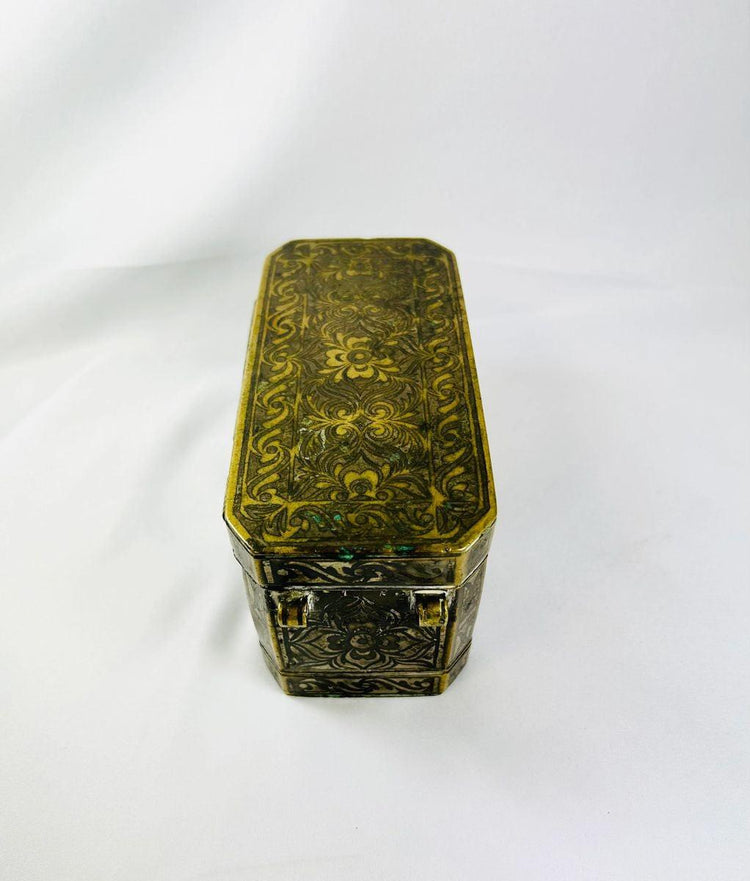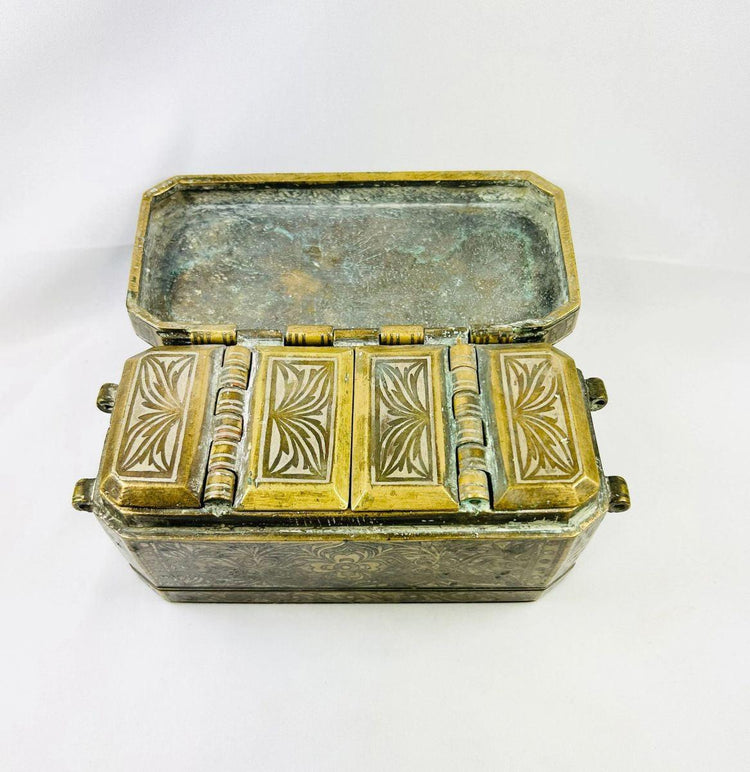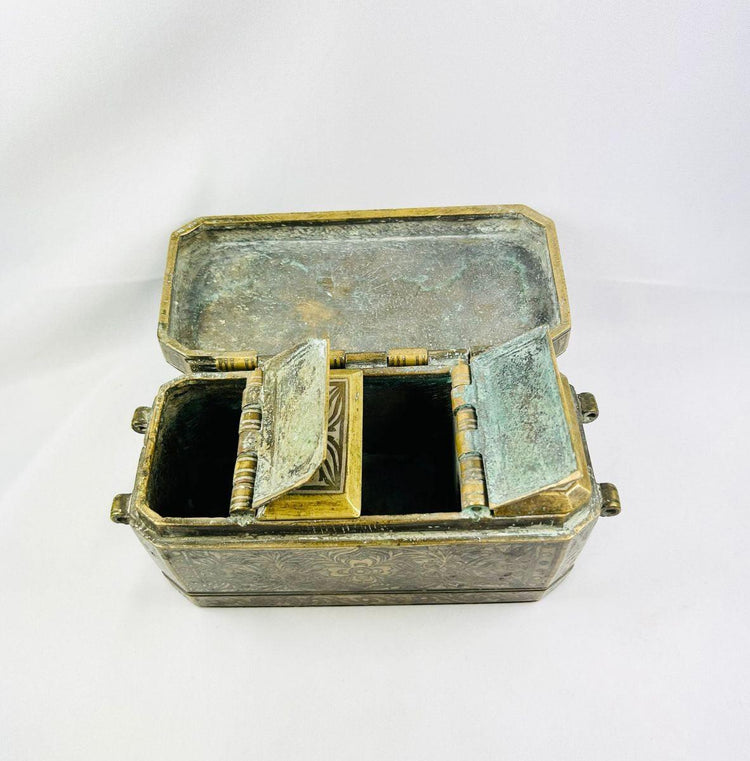Historic Betel Nut Box | Philippines | Hand-Engraved Brass | Circa 1780–1820
Description
More
Less
Historical Context & Origin
Region: Philippines (likely Mindanao region)
Material: Mixed metal alloy with brass and copper inlay
Period: Late 18th to Early 19th Century (circa 1780–1820)
Description
This finely crafted betel nut box reflects the ornate metalworking traditions of Mindanao, where Islamic and Spanish colonial influences merged into highly decorative utilitarian art. The rectangular form is embellished with brass inlay floral motifs across its lid and sides, showcasing symmetry and refined craftsmanship. The interior contains four hinged compartments, traditionally used for storing betel nut, lime paste, clove, and other elements central to betel chewing practices. Side-mounted rings suggest the box may once have been suspended or carried on a belt or sash.
Features
- Intricate hand-engraved floral and scrollwork designs
- Four internal hinged compartments for betel nut accoutrements
- Brass inlay set into a mixed-metal alloy base with natural aged patina
- Side rings for fastening or suspension
- Traditional construction reflecting Southeast Asian ritual culture
Cultural Significance
Betel chewing was deeply ingrained in Southeast Asian society, serving as both a daily custom and a ceremonial practice. Boxes of this kind functioned as personal accessories and status symbols, often reflecting local artistry and cultural identity. This example demonstrates the synthesis of indigenous, Islamic, and colonial motifs characteristic of 19th-century Filipino craftsmanship.
Condition
The box survives in very good antique condition, with a rich patina enhancing its age. Minor oxidation and surface wear are present but consistent with its history of use. Hinges and interior lids remain intact and functional, with no evidence of modern repair or restoration.
Dimensions (approximate)
Height: 3 in
Width: 6.5 in
Depth: 3 in
Age
Circa 1780–1820 (approximately 130–170 years old)
Description
Historical Context & Origin
Region: Philippines (likely Mindanao region)
Material: Mixed metal alloy with brass and copper inlay
Period: Late 18th to Early 19th Century (circa 1780–1820)
Description
This finely crafted betel nut box reflects the ornate metalworking traditions of Mindanao, where Islamic and Spanish colonial influences merged into highly decorative utilitarian art. The rectangular form is embellished with brass inlay floral motifs across its lid and sides, showcasing symmetry and refined craftsmanship. The interior contains four hinged compartments, traditionally used for storing betel nut, lime paste, clove, and other elements central to betel chewing practices. Side-mounted rings suggest the box may once have been suspended or carried on a belt or sash.
Features
- Intricate hand-engraved floral and scrollwork designs
- Four internal hinged compartments for betel nut accoutrements
- Brass inlay set into a mixed-metal alloy base with natural aged patina
- Side rings for fastening or suspension
- Traditional construction reflecting Southeast Asian ritual culture
Cultural Significance
Betel chewing was deeply ingrained in Southeast Asian society, serving as both a daily custom and a ceremonial practice. Boxes of this kind functioned as personal accessories and status symbols, often reflecting local artistry and cultural identity. This example demonstrates the synthesis of indigenous, Islamic, and colonial motifs characteristic of 19th-century Filipino craftsmanship.
Condition
The box survives in very good antique condition, with a rich patina enhancing its age. Minor oxidation and surface wear are present but consistent with its history of use. Hinges and interior lids remain intact and functional, with no evidence of modern repair or restoration.
Dimensions (approximate)
Height: 3 in
Width: 6.5 in
Depth: 3 in
Age
Circa 1780–1820 (approximately 130–170 years old)
You May Also Like


















